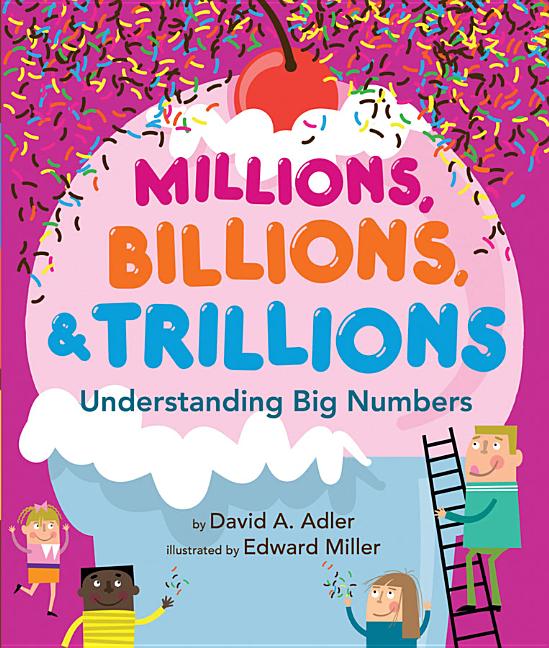local_shipping Free Standard Shipping on all orders $25+ and use Coupon Code SummerReading for an additional 20% off!
Millions, Billions, & Trillions: Understanding Big Numbers

Number concept
Million (The number)
Billion (The number)
Publishers Weekly
Math book veterans Adler and Miller put giant numbers into perspective by using familiar frames of reference and by appealing to readers' imaginations: "How many ice cream sundaes would one billion dollars buy? At five dollars a Sunday, you could buy one thousand sundaes every day for more than five hundred years." Real-world examples (New York City has a population of over eight million people) combine with more fanciful ways to conceptualize these quantities ("One trillion dollars would make a stack about seven hundred miles high"), and Miller's eye-popping digital cartoons help make these intimidatingly massive numbers more digestible. And for those up for even more of a mental challenge: an author's note tackles quadrillions, quintillions, and sextillions. Ages 6-10. (Mar.)
Copyright 2013 Publishers Weekly, LLC Used with permission.School Library Journal
Gr 3-5--Adler does a wonderful job of helping school-age children understand the concept that a million is a heck of a lot. He begins his explanations with things that children know. For example, he asks how many slices of pizza a million dollars would buy and tells readers they could acquire two entire pizza pies every day for 68 years. Grounding their thinking in something they already know helps youngsters begin to understand the enormity of the number. Similarly, he describes one billion in terms of how many hairs are on a typical human's head. One hundred thousand! If you gathered together ten thousand people you would have about one billion hairs. Trillions are difficult to imagine, and the book gives an example a good shot. Knowing that it is virtually uncountable is all that any of us needs to know. Miller's clean, clear digital graphics are lively and colorful, adding an extra bit of fun to the presentation. The book is perfectly suited to elementary students, who are able to think conceptually, and their foundational knowledge of math will help them make the leaps they will need to take to understand millions, billions, and trillions. For curious children who find numbers intriguing, this book is right on the money.--Joan Kindig, James Madison University, Harrisonburg, VA
Copyright 2013 School Library Journal, LLC Used with permission.


